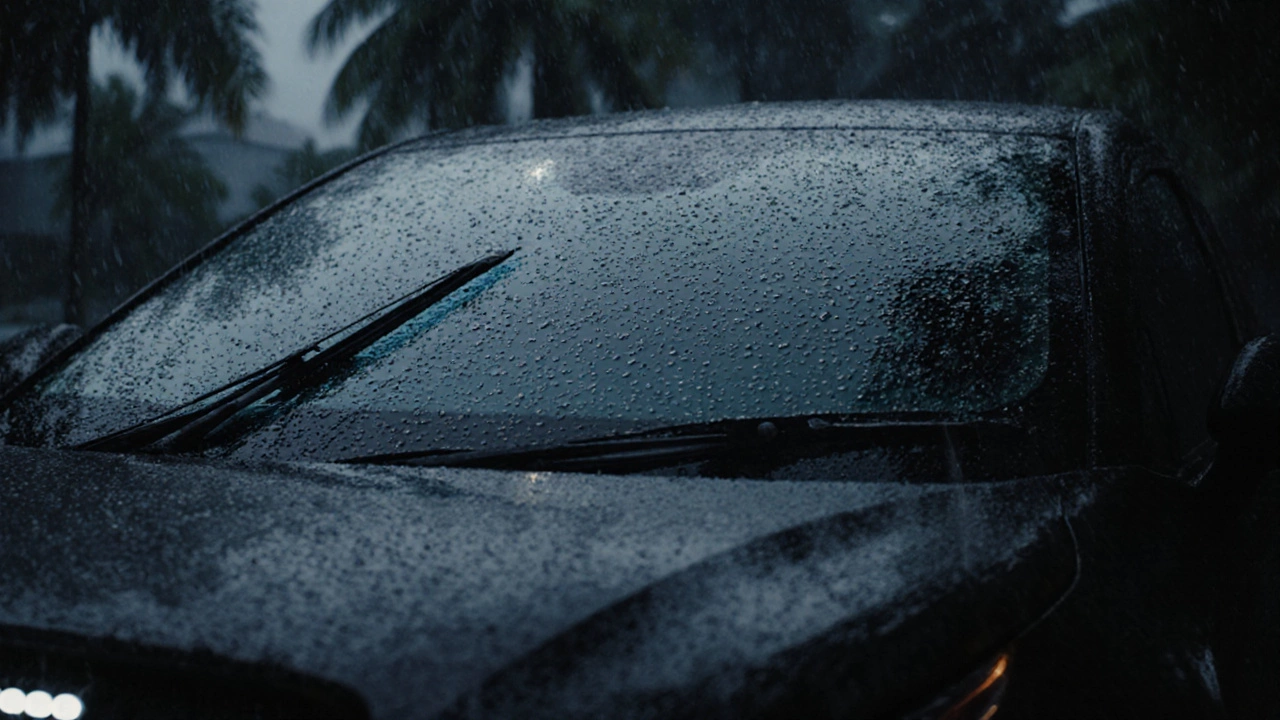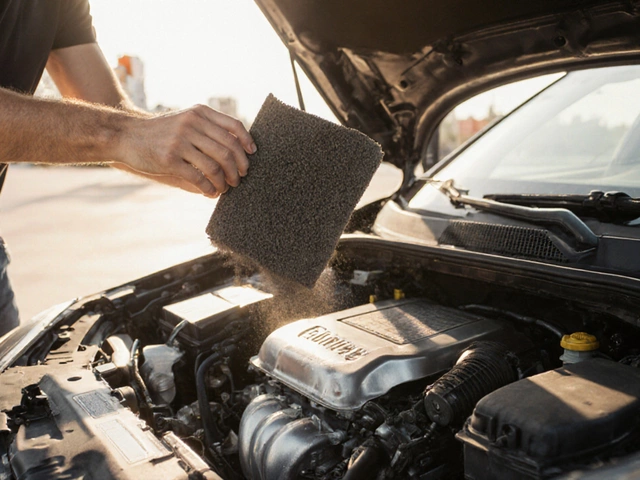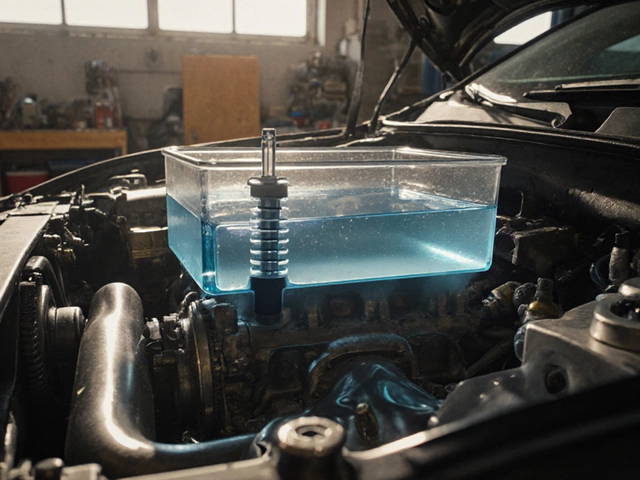Ever been driving in the rain and your windshield wipers smear, chatter, or leave streaks? It’s not just annoying-it’s dangerous. A bad set of wipers can cut your visibility by more than half, especially at night or on highways. The good news? Picking the right ones isn’t rocket science. You just need to know what to look for.
Start with the correct size
Windshield wipers don’t come in one-size-fits-all. Your car needs specific lengths for the driver and passenger sides. Using the wrong size means poor coverage, gaps in your view, or even the blade hitting the trim or hood. The easiest way to find your size? Check your owner’s manual. If you don’t have it, most auto parts stores have free wiper blade size lookup tools online or in-store. Just enter your car’s make, model, and year.
For example, a 2023 Toyota Corolla typically uses a 26-inch blade on the driver’s side and a 16-inch blade on the passenger side. A 2022 Ford Ranger might need 28-inch and 14-inch blades. Don’t guess. Even a 1-inch difference can cause problems.
Know the three main types
Not all wiper blades are made the same. There are three types you’ll see on the shelf:
- Conventional blades - These are the older, frame-style blades with a metal skeleton. They’re cheaper but can lift at high speeds and collect ice in winter.
- Beam blades - These are all-rubber, flat designs with no visible frame. They press evenly across the glass, handle high speeds better, and resist snow buildup. Most new cars come with these from the factory.
- Hybrid blades - A mix of both. They have a lightweight frame for structure but use a streamlined, aerodynamic cover. They’re a solid middle ground for drivers who want better performance than conventional blades but aren’t ready to spend top dollar on beam blades.
In Australia, where weather swings from dry heat to heavy monsoon rains, beam blades are the smart pick. They don’t lift on the open road like conventional ones, and they shed rain and debris more cleanly. Brands like Bosch, Rain-X, and Michelin make reliable beam blades that last.
Material matters - rubber vs silicone
Most blades use rubber, but silicone is gaining ground. Standard rubber blades work fine for 6-12 months, depending on sun exposure and how often you use them. But if you live in a place like Adelaide-where summer UV hits hard and winters get chilly-rubber can crack or harden faster.
Silicone blades last longer (up to 2 years), resist UV damage better, and glide smoother over the glass. They’re pricier upfront, but you’ll replace them less often. If you drive daily and park outside, silicone is worth the extra cost. Brands like PIAA and Anco offer silicone blades that handle Aussie conditions well.
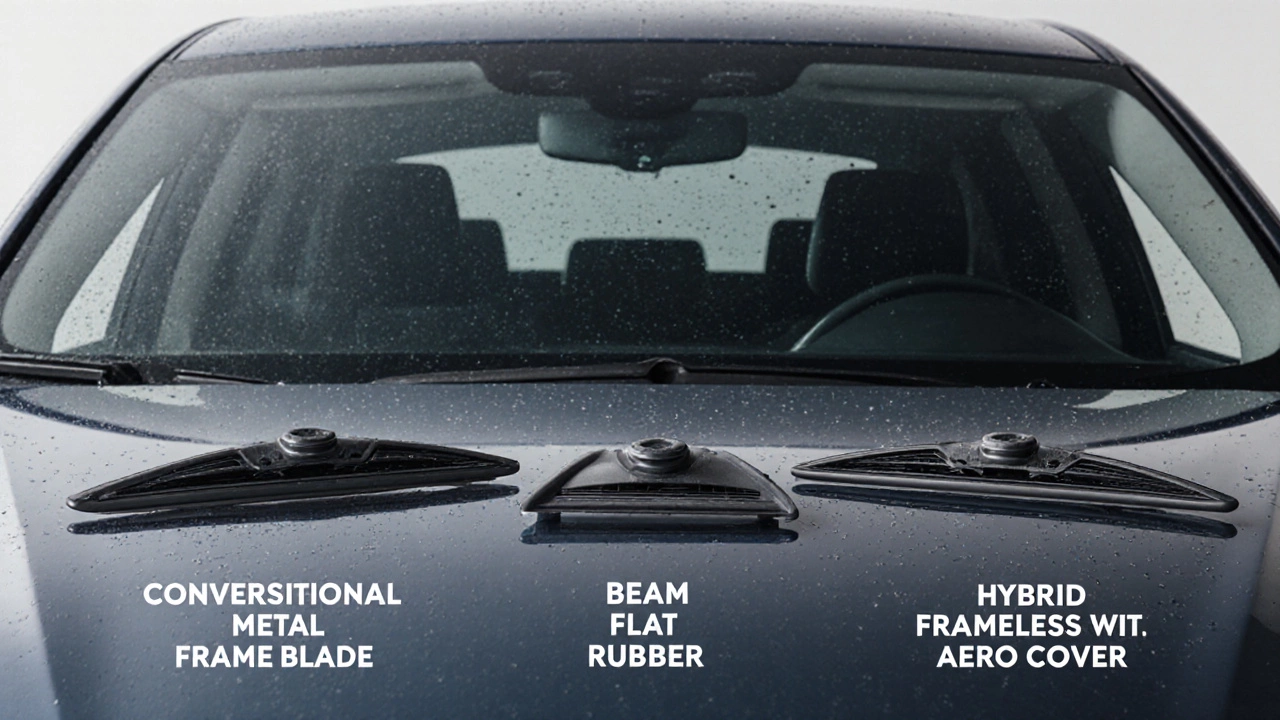
Check the attachment type
Wiper arms come in different shapes. The blade has to click onto the arm correctly, or it won’t stay in place. The three most common types in Australia are:
- J-hook - The most common. Looks like a J-shaped clip. Just slide the blade onto the hook and push until it clicks.
- Bayonet - Has a pin that slides into a slot and twists to lock. You’ll see this on older Hondas, Toyotas, and some European cars.
- Pin-type - Rare now, but still on some older models. The blade slides over a straight pin and locks with a small tab.
When you buy blades, the packaging will say which attachment type it fits. Match it exactly. If you’re unsure, take a photo of your current wiper arm and show it to a store clerk. Most shops will help you confirm before you buy.
Don’t ignore the climate
If you live in a place with harsh winters, snow, or freezing rain, standard blades will freeze to the glass. That’s when you need winter blades. These have a rubber boot that covers the frame, stopping ice and snow from building up inside. They’re especially useful in the southern states like Victoria or Tasmania, where frost is common.
Even if you’re in Adelaide or Brisbane, where snow is rare, heavy summer storms and dust can wear blades out fast. Look for blades with reinforced rubber or anti-corrosion coatings. Avoid cheap no-name brands-many use thin rubber that dries out in a few months.
When to replace them
You don’t need to wait until they fail completely. Replace wipers if you notice:
- Streaking or smearing, even after cleaning the glass
- Chattering or skipping across the windshield
- Crackling noise when they move
- Cracked or brittle rubber
- Missing pieces of the rubber edge
Most manufacturers recommend replacing wipers every 6 to 12 months. But if you’re driving 30,000 km a year and parking outside, replace them every 6 months. If you keep your car in a garage and drive less, 12 months is fine.
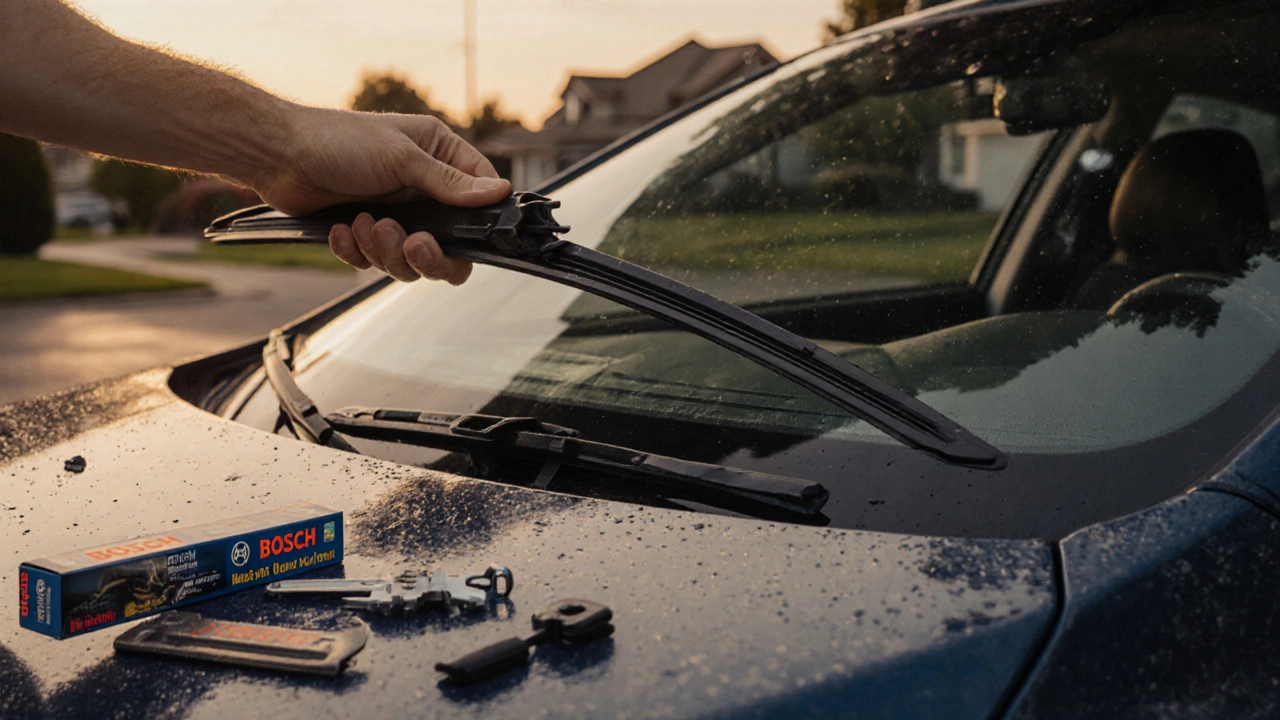
What to avoid
Here are common mistakes people make:
- Buying based on price alone - A $10 pair might last two months. A $25 pair lasts a year. You save money over time by buying better.
- Ignoring the brand - Stick to Bosch, Rain-X, Michelin, Anco, or Valeo. These brands test their blades under real conditions, not just lab settings.
- Trying to stretch a blade - Never force a blade to fit. If it doesn’t click, it’s the wrong type.
- Using them to clear ice - Never turn on wipers if they’re frozen to the glass. You’ll burn out the motor.
Installation is simple
Changing wipers takes under 5 minutes. Lift the arm away from the windshield, press the release tab, slide the old blade off, slide the new one on until it clicks, then lower the arm gently. Test them with a quick spray of washer fluid to make sure they’re seated right.
Pro tip: Clean your windshield with rubbing alcohol before installing new blades. Dirt and road grime on the glass will wear out new blades faster.
Final checklist before buying
Before you pay, ask yourself:
- Do I have the correct size for both driver and passenger sides?
- Is this a beam or hybrid blade? (Recommended for Australian conditions)
- Is the rubber silicone or standard? (Silicone lasts longer in UV-heavy climates)
- Does the attachment match my car’s wiper arm?
- Is this from a trusted brand? (Avoid no-name imports)
- Do I need winter blades? (Only if you get frost or heavy rain regularly)
If you answer yes to all of these, you’re good to go. The right wipers don’t just improve visibility-they reduce stress, prevent accidents, and save you money in the long run.
How often should I replace my windshield wipers?
Replace them every 6 to 12 months. If you drive a lot, park outside, or live in a hot, sunny area like Adelaide, replace them every 6 months. Signs they need replacing include streaking, chattering, or cracked rubber.
Can I use any wiper blade on my car?
No. Wiper blades are sized and shaped for specific vehicles. Using the wrong size can cause poor visibility, damage to the windshield, or even damage the wiper arm. Always check your owner’s manual or use a reliable online size finder.
Are expensive wiper blades worth it?
Yes, if you care about safety and longevity. Premium blades like Bosch Aerotwin or Rain-X Latitude last longer, wipe cleaner at high speeds, and resist UV damage. Cheaper blades may cost half as much but need replacing twice as often.
What’s the difference between beam and conventional wipers?
Beam blades are frameless and press evenly across the glass, giving better contact and less lift at high speeds. Conventional blades have a metal frame that can bend, rust, or collect snow. Beam blades are more durable and perform better in extreme weather.
Do I need winter wipers if I live in Adelaide?
Not usually. Adelaide rarely gets freezing rain or snow. But if you get heavy seasonal storms or dusty conditions, consider blades with a rubber boot or silicone rubber-they handle grime and rain better. Winter blades are more critical in southern states like Victoria or Tasmania.
